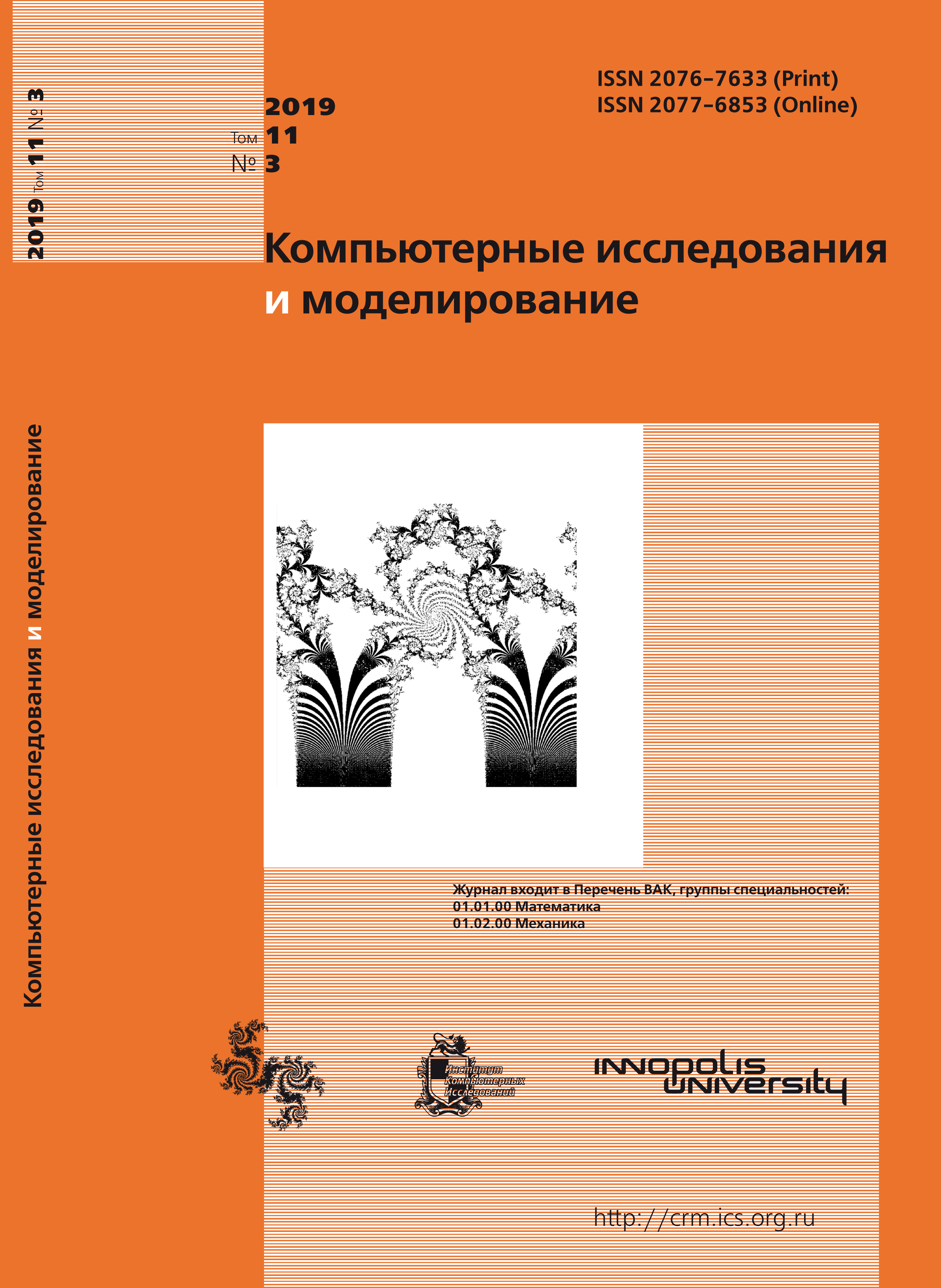All issues
- 2024 Vol. 16
- Issue 1 (special issue)
- 2023 Vol. 15
- 2022 Vol. 14
- 2021 Vol. 13
- 2020 Vol. 12
- 2019 Vol. 11
- 2018 Vol. 10
- 2017 Vol. 9
- 2016 Vol. 8
- 2015 Vol. 7
- 2014 Vol. 6
- 2013 Vol. 5
- 2012 Vol. 4
- 2011 Vol. 3
- 2010 Vol. 2
- 2009 Vol. 1
Dynamic regimes of the stochastic “prey – predatory” model with competition and saturation
We consider “predator – prey” model taking into account the competition of prey, predator for different from the prey resources, and their interaction described by the second type Holling trophic function. An analysis of the attractors is carried out depending on the coefficient of competition of predators. In the deterministic case, this model demonstrates the complex behavior associated with the local (Andronov –Hopf and saddlenode) and global (birth of a cycle from a separatrix loop) bifurcations. An important feature of this model is the disappearance of a stable cycle due to a saddle-node bifurcation. As a result of the presence of competition in both populations, parametric zones of mono- and bistability are observed. In parametric zones of bistability the system has either coexisting two equilibria or a cycle and equilibrium. Here, we investigate the geometrical arrangement of attractors and separatrices, which is the boundary of basins of attraction. Such a study is an important component in understanding of stochastic phenomena. In this model, the combination of the nonlinearity and random perturbations leads to the appearance of new phenomena with no analogues in the deterministic case, such as noise-induced transitions through the separatrix, stochastic excitability, and generation of mixed-mode oscillations. For the parametric study of these phenomena, we use the stochastic sensitivity function technique and the confidence domain method. In the bistability zones, we study the deformations of the equilibrium or oscillation regimes under stochastic perturbation. The geometric criterion for the occurrence of such qualitative changes is the intersection of confidence domains and the separatrix of the deterministic model. In the zone of monostability, we evolve the phenomena of explosive change in the size of population as well as extinction of one or both populations with minor changes in external conditions. With the help of the confidence domains method, we solve the problem of estimating the proximity of a stochastic population to dangerous boundaries, upon reaching which the coexistence of populations is destroyed and their extinction is observed.
Indexed in Scopus
Full-text version of the journal is also available on the web site of the scientific electronic library eLIBRARY.RU
The journal is included in the Russian Science Citation Index
The journal is included in the RSCI
International Interdisciplinary Conference "Mathematics. Computing. Education"







